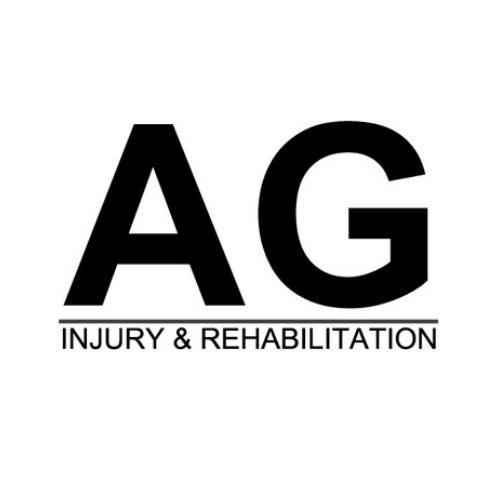Did you know that tennis elbow affects up to 3% of the population, yet only a small fraction of cases are actually caused by playing tennis? This common condition, technically known as lateral epicondylitis, can strike anyone who performs repetitive arm movements - from painters to pianists, gardeners to gamers.
Whether you're dealing with tennis elbow pain or looking to prevent it, the right exercises can make all the difference. A well-structured routine of stretches and strengthening movements not only aids recovery but helps build resilience against future flare-ups.
The best exercises for Tennis Elbow Pain Relief
Wrist Extension Stretch
The wrist extension stretch targets tense forearm muscles, making it an effective exercise for tennis elbow relief. To perform this stretch correctly, start by extending your arm with your palm facing down. With your other hand, press down gently on the top of your hand, moving it toward the floor.
Hold the stretch position for 15-30 seconds, completing 2-3 sets. While stretching, keep your elbow straight but not locked - this helps maintain proper form and prevents strain on the joint. You should feel a gentle pull along your forearm muscles.
For those experiencing severe discomfort, reduce the intensity of the downward pressure. Listen to your body and adjust the stretch angle as needed. The goal is to create a mild stretching sensation without causing pain or discomfort in the affected area.
Wrist Flexor Stretch
The wrist flexor stretch targets the inner forearm muscles commonly affected by tennis elbow. To perform this stretch, extend your arm forward with your palm facing up. Using your other hand, gently pull your fingers back toward your body until you feel a mild stretch along your forearm.
Maintain the stretch for 15-30 seconds and repeat for 2-3 sets. Focus on feeling the stretch in your forearm muscles rather than your wrist joint. Maintain steady, controlled movements throughout the exercise program for epicondylitis.
For beginners or those needing extra support, try performing this stretch with your forearm resting against a wall. This modification helps maintain proper form while reducing strain on the affected area. Remember to stretch only to the point of mild tension - never force the movement or stretch to the point of pain.
Towel Twist
The towel twist helps build forearm muscle strength, supporting recovery from tennis elbow exercises and stretches. To perform this exercise, grasp a towel with both hands positioned shoulder-width apart. Twist the towel in opposite directions, as if wringing out water.
During the movement, concentrate on rotating your forearms rather than just moving your wrists. This targeted approach helps activate the muscles affected by tennis elbow. Complete 2-3 sets of 10 twists, maintaining controlled movements throughout the exercise.
For those who find the standard version challenging, try using a shorter towel to reduce resistance. This modification lets you work within your comfort zone while still getting the benefits of the exercise. As your strength improves, gradually increase the length of the towel for more resistance.
Grip Squeezes
Grip squeezes work to strengthen forearm muscles, which supports recovery from physical therapy exercises symptoms. Using a stress ball or rolled-up sock, hold the object in your palm and squeeze it firmly. Keep the pressure steady for 5-10 seconds before releasing your grip.
Complete 3 sets of 10-15 repetitions, taking short breaks between sets. Focus on maintaining consistent pressure throughout each squeeze to get the most benefit from the exercise. This helps build strength in the muscles that support your wrist and elbow joints.
If you have a weak grip, start with softer objects like a foam ball or sponge. As your strength builds, move on to firmer items like stress balls or tennis balls. This progression lets you build strength gradually while avoiding strain on tender muscles and tissues.
Isometric Wrist Extension
Isometric wrist extensions help build muscle stability without movement, making them ideal for managing tennis elbow pain. To perform this exercise, press your palm firmly against a flat, immovable surface like a table or wall. Apply steady pressure while keeping your wrist straight.
Maintain the pressure for 10 seconds per hold, completing 3 sets. Keep the force consistent throughout each hold - avoid increasing or decreasing pressure during the exercise. This steady engagement helps strengthen the muscles supporting your wrist and elbow.
If you feel discomfort, adjust the amount of pressure you apply. Start with gentle force and gradually increase as your strength builds. The exercise should create muscle engagement without causing pain. Take short breaks between sets to prevent muscle fatigue and maintain proper form.
Eccentric Wrist Extension
Eccentric wrist extensions play a key role in building strength in muscles and tendons affected by tennis elbow. To perform this exercise, start by holding a light weight (1-3 pounds) with your palm facing down. Begin with your wrist bent upward, then slowly lower the weight by bringing your wrist down.
The downward movement should take about 3-5 seconds. Focus on controlled motions to maximize muscle engagement. Start with 2 sets of 10 repetitions, allowing brief rest periods between sets to prevent muscle fatigue.
If you're new to exercise for tennis elbow, begin without weights. Practice the movement pattern using just your hand weight. As your comfort level increases, add light resistance using small dumbbells or water bottles. Always maintain proper form and stop if you feel pain or sharp discomfort.
Finger Extension Exercise
Finger extension exercises strengthen the forearm muscles that support physical therapy exercises recovery. Using a rubber band wrapped around your fingers, spread them apart against the band's resistance. This movement targets the extensor muscles commonly affected by tennis elbow symptoms.
Make each repetition slow and purposeful, focusing on muscle control throughout the movement. Complete 2 sets of 15 repetitions, taking short breaks between sets to prevent muscle fatigue. This measured approach helps build strength while protecting tender tissues.
For those finding the exercise challenging, start with a looser rubber band to reduce resistance. As your strength builds, switch to thicker bands or position them closer to your fingertips for increased difficulty. Stop if you experience sharp pain or discomfort, and adjust the band tension to match your comfort level.
Forearm Supination and Pronation
These rotational movements help limber up stiff forearms and reduce muscle tension linked to tennis elbow. Start by sitting with your elbow bent at 90 degrees, keeping your upper arm close to your body. Turn your palm to face up (supination), then rotate it to face down (pronation).
Make each rotation smooth and steady. You can add light weight, such as a small dumbbell or water bottle, for extra resistance. Complete 2 sets of 10 repetitions in each direction, pausing briefly between movements to maintain control.
If you feel pain during the full rotation, reduce your range of motion to stay within comfortable limits. Start with smaller movements and gradually increase the range as your symptoms improve. Keep your upper arm steady throughout the exercise to isolate the forearm muscles properly.
Bicep Curls
Bicep curls strengthen the entire arm structure, supporting the tennis elbow stretches and exercises process. Stand with feet shoulder-width apart, holding a light weight in your hand with your palm facing forward. Keep your elbow close to your body and slowly lift the weight toward your shoulder.
During the movement, maintain a stable elbow position - avoid swinging or using momentum to lift the weight. Lower the weight back down with controlled motion, focusing on muscle engagement throughout the exercise. Complete 3 sets of 10 repetitions, resting briefly between sets.
For those new to tennis elbow rehabilitation exercises, start without weights. Practice the movement using just your arm weight until you master proper form. Once comfortable, add light resistance using small dumbbells or filled water bottles. Stop if you experience pain or discomfort in your elbow area.
Wrist Rotations
Wrist rotations form a basic yet helpful part of tennis elbow rehabilitation. Make smooth circular movements with your wrist, keeping your forearm steady and supported on a flat surface. These controlled motions help loosen tight muscles while building flexibility in the affected area.
Perform the exercise in both clockwise and counterclockwise directions to work all muscle groups evenly. Complete 2 sets of 15 rotations in each direction, taking short breaks between sets. Keep the movements fluid but controlled, focusing on steady muscle engagement throughout the tennis elbow exercises.
Stay within your natural range of motion - forcing your wrist beyond comfortable limits can worsen tennis elbow symptoms. If you notice any sharp pain or discomfort, reduce the size of your circles or stop the exercise. Remember that gentle, consistent movements produce better results than aggressive stretching.
Importance of Consistency
Regular practice of tennis elbow exercises produces better outcomes than sporadic workouts. Setting aside specific times each day for your exercises helps build muscle memory and promotes steady healing. Most people see the best results when they perform their exercises at the same time daily, such as morning and evening.
Start by picking 2-3 exercises from your routine and doing them during daily activities. For example, try wrist stretches while watching TV or grip squeezes during work breaks. This method makes the exercises feel less like a task and more like a natural part of your day.
Steady exercise helps reduce inflammation and builds strength over time. Muscles and tendons respond better to frequent, gentle movement than occasional intense sessions. Keep a simple log of your exercises to track progress and maintain motivation. Remember that small, daily efforts often lead to better long-term results than irregular intense workouts.
Gradual Progression and Combining Methods
Start your physical therapy exercises at a low intensity and slowly build up over time. Begin with basic movements without weights, focusing on proper form. Add resistance only when you can complete exercises pain-free for several sessions.
Combine these exercises with other treatment methods for better results. Apply ice for 15-20 minutes after exercise to reduce inflammation. Using a tennis elbow strap during daily activities helps support healing muscles. Rest between exercise sessions lets tissues recover properly.
Watch for warning signs that indicate you should slow down or stop. Sharp pain, increased swelling, or lasting discomfort mean you need to reduce exercise intensity. Contact your healthcare provider if symptoms worsen or don't improve after several weeks of consistent exercise. They can assess your progress and adjust your exercise plan as needed.
Common Mistakes and Professional Consultation
Poor form during physiotherapy exercises can slow recovery or worsen symptoms. Common errors include using too much weight too soon, rushing through movements, and skipping warm-ups. Watch your wrist position during stretches - it should stay aligned with your forearm to prevent extra strain on tender tissues.
Pay attention to your body's signals while exercising. Stop if you feel sharp pain, burning sensations, or increased swelling. These symptoms suggest you might need to adjust your technique or reduce exercise intensity. Take rest days between workouts to let tissues heal properly.
See a sports therapist or doctor if pain continues after two weeks of consistent exercise, or if symptoms get worse. Early treatment helps prevent tennis elbow from becoming a long-term problem. Medical professionals can check your form, modify exercises for your specific needs, and recommend additional treatments when needed.
Building Long-Term Recovery
Success in managing tennis elbow isn't about finding quick fixes - it's about commitment to a consistent exercise routine that promotes healing and prevents recurrence. By incorporating these exercises into your daily schedule and gradually progressing as your strength improves, you're laying the foundation for lasting relief.
Remember that recovery is a journey unique to each person. While these exercises form a solid foundation for rehabilitation, don't hesitate to seek professional guidance if you need help perfecting your form or adjusting the intensity. The key is staying patient and persistent while listening to your body's signals throughout the healing process.

